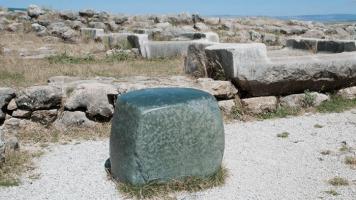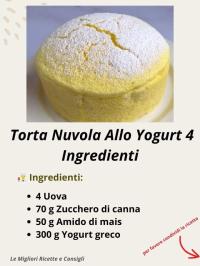Copy Link
Add to Bookmark
Report
HOMEBREW Digest #0272

HOMEBREW Digest #272 Thu 05 October 1989
FORUM ON BEER, HOMEBREWING, AND RELATED ISSUES
Rob Gardner, Digest Coordinator
Contents:
Re: Sanitation and Yest Rehydration (dw)
Fermenting at Cold Temps (John DeCarlo <m14051@mwvm>)
First Mash (Tom Hotchkiss)
Re: Homebrew Digest #271 (October 04, 1989) (CCL-F) <ggibson@PICA.ARMY.MIL>
Mashing modified malts (BROWN)
Send submissions to homebrew%hpfcmr@hplabs.hp.com
Send requests to homebrew-request%hpfcmr@hplabs.hp.com
----------------------------------------------------------------------
Date: 4 Oct 89 09:08:47 EDT (Wednesday)
From: dw <Wegeng.Henr@Xerox.COM>
Subject: Re: Sanitation and Yest Rehydration
>The yeast acted as if I'd added it to wort
except (of course!) there was no foaming.<
You should have observed some activity after about 30 minutes. While I
wouldn't have expected it to gush out, some ver fine bubbles should have
formed on top of thew water (similar to what happens when you proof bread
yeast). Perhaps the yeast was old.
/Don
------------------------------
Date: Wednesday, 4 Oct 1989 09:08:15 EST
From: m14051@mwvm (John DeCarlo <m14051@mwvm>)
Subject: Fermenting at Cold Temps
In Digest #261, Greg Crawford <Crawford.WGST129@Xerox.COM> writes:
>Also, could anyone tell me what effect fermenting at too cold a temp.
>would have. The yeast is a liquid german lager and the fermenting temp.
>is 40 degrees. (This was before I bought my hunter energy monitor).
>The beer fermented to completion but there is a strange background
>flavor I can't put my finger on. Infection has crossed my mind but
>I have tried two beers like this with the same results while my ales
>fermented at 70 degrees have had no problem
Well, I just got my copy of the special issue of _zymurgy_--the 1987 Special
Troubleshooting Issue (Vol 10, No. 4). An article in there, entitled
"Tracking Down Off-Flavors: A Brewer's Detective Story" investigates a brew
"variously described as meaty, onionlike, brothy, cooked vegetable, and
off-yeasty". (Talk about hard to describe.)
The article tells about the whole investigation, isolating various factors,
etc. but the gist was that the brew had a high level of methional, sometimes
described as "meat aldehyde". Simply by increasing the primary fermentation
temperature from 8C (46F) to 12C (54F), the levels of DMS, acetic acid,
and, most importantly in this case, methional were significantly reduced.
The article concludes with "We have all heard
so much about the well-established dire consequences of warm fermentations
that we tend to think, 'Well then, the colder the better.' It comes as a
shock to learn that cold fermentations also can lead to off-flavors. What
is really needed is the *optimum* fermentation temperature, not
necessarily the lowest at which our yeast will work."
John DeCarlo
ARPANET: M14051@mwvm.mitre.org (or M14051%mwvm@mitre.arpa)
Usenet: @...@!uunet!hadron!blkcat!109!131!John_Decarlo
------------------------------
Date: Wed, 4 Oct 89 9:19:56 MDT
From: Tom Hotchkiss <trh@hpestrh>
Subject: First Mash
In response to Mark Never's query about mashing, I have to talk about my
first attempt. I just put the grains in a big picnic cooler, and dumped in
about 1 to 1 1/2 qts./lb. of 170 degree water. At first, I didn't mix
it well and ended up with pretty wide temperature variations in the mash.
So, I stirred a bunch more and the temp settled at something below the
desired 150-154. So, I started adding boiling water a quart or so at a
time until the desired temp was reached.
Next, I drank a homebrew and waited 1 1/2 hrs. Then, I made a feeble attempt
at sparging by trying to use the spigot on the picnic cooler. The cooler
was one of the rectangular varieties, and I didn't have the grain in a bag.
The grain would quickly clog the spigot, stopping the flow of wort. The
only way to get anything was to use a spoon to hold the grain back from
the spigot. Hot water from the sink was used for sparging (not the best
way). In summary, with the big rectangular cooler (grain spread thin on
bottom of cooler) and no grain bag, I got a really inefficient mash.
Back then I didn't use a hydrometer, so I don't know how bad it was.
The bottom line however was that I got a really great pale ale! It was
a little light which I'm sure was due to the inefficient mash. Since that
time I have tried more single step infusions, multi-step infusions,
and temperature step on the stove. Based on my experiences, I would
recommend the single step infusion for your first attempt. Of all the
methods, it is the fastest, easiest, and yields great results. Multi-step
infusions are a bad idea since you end up with way too much water in
the mash. Temperature step on the stove seems to give a slightly more
efficient mash, but it takes at least twice as long as single step
infusion. Here are a few more pointers:
1. *Definately* buy a grain bag. A large one (good for at least 10 lb of
grain) shouldn't cost more than 5 bucks.
2. Try to find a tall, round cooler with a spigot on the bottom (like the
Gatoraide bucket Harry Carson emptied on Bill Parcels when the Giants
won the superbowl). The reason is that I have found the biggest factor
in mash efficieny to be sparging. The tall round cooler will give you
a deeper grain bed for sparging. Note that if you have a rectangular
cooler and can't afford a round one right now: try it anyway, it will
still work. Another option is to make the Zapap sparging bucket
described in Papazian's book.
3. Be patient sparging!!! The process should take at least an hour.
Letting the wort drain off too quickly lowers the mash efficieny.
Hot water from the sink works, but it is only about 110 degrees and
I have heard that hot water pipes tend to have lots of nasties in
them. So don't mess around and heat up some cold water on the
stove for sparging.
4. For your first attempt, I would suggest using an extra pound or two
of pale malt over what the recipie calls for. This is in anticipation
of reduced efficieny for your first attempt. English malt is
highly modified and works best for infusion mashing.
5. Finally, I heat up the water that you add to the mash to 180 rather
than 170 degrees, since 170 seems to result in too low a temp. It's
eaisier to adjust the temp down than up. For a good discussion of
infusion mashing, I would suggest Dave Line's "Big Book of Brewing."
It's also good for a few laughs.
Go for it, you won't be disappointed.
Tom Hotchkiss trh@hpfcla
-----------------------------------------------------------------------------
------------------------------
Date: Wed, 4 Oct 89 10:24:49 EDT
From: Gregg Gibson (CCL-F) <ggibson@PICA.ARMY.MIL>
Subject: Re: Homebrew Digest #271 (October 04, 1989)
I am new to the world of homebrewing, but not to the world of
good beer. Anyway, I would like to experiment with brewing but I really
am not sure where to start. Any advice on starting out or the basics
would be appreciated.
Gregg Gibson
------------------------------
Date: Wed, 4 Oct 89 15:10 EST
From: <BROWN%MSUKBS.BITNET@CORNELLC.cit.cornell.edu>
Subject: Mashing modified malts
Mark Nevar asks:
> It explained that the single stage mash was good
> for grains that are highly modified and the temperature controlled
> mash is good for undermodified malts. So, if I decide to use the
> single-stage exclusively, do I have to be concerned with purchasing
> ONLY highly modified malts ? If I do, then how can I tell how
> modified the malt is ? I purchased 10# of English 2 row. From his
> book, my guess is that this is highly modified.
>From what I understand, English 2-row should be highly modified. Assuming,
of course that it was malted by an English company. I think there is a way
to see how modified the malt is by cutting a kernel lengthwise and looking at
how much the cotyledon was allow to grow before the sprouting process was
halted. More than half the length of the kernel means highly modified (if my
memory serves me correctly). I think this is in Papazian, but I will check
when I return to the brewhouse this evening. I almost always use the
temperature controlled method, even with 2-row malts, with fine results. It's
not really that much more difficult than the infusion ("single-stage") method.
As I've said, it shouldn't hurt, even if you have highly-modified malt. If
you decide to do the infusion method, I'd make sure the malt is modified, or
you may not get the results you expect. Good mashing!
Jackie Brown Bitnet: Brown@MSUKBS
------------------------------
End of HOMEBREW Digest #272, 10/05/89
*************************************
-------



























